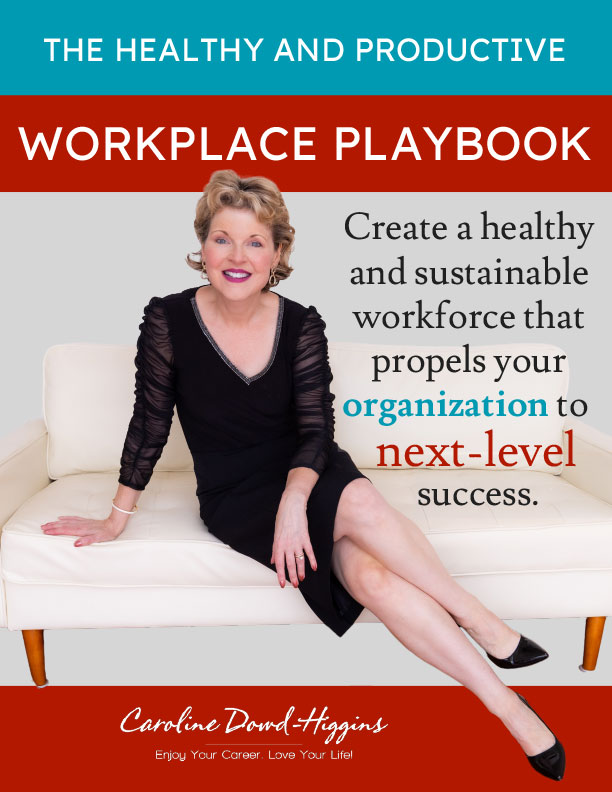Executive Presence Isn’t Just for Executives

Executive presence used to harken images of expensively attired corporate employees who walked the walk and talked the talk to inspire confidence and yield influence for success in lavish offices and board rooms. In COVID times, the world has destigmatized remote work and the hybrid work model will be the new norm for much of the global workforce.
The New Executive Presence
With a multi-generational workforce navigating the ongoing pandemic journey, executive presence is still important, but the rules of engagement have changed for the better. You need not be in the C-Suite to cultivate and display your executive presence. Being aware of this early on in your career will empower you towards upward mobility and earned respect to set the stage for your future. Seasoned leaders can benefit from freshening-up their executive presence and should never take how others perceive them for granted.
Executive presence is your ability to inspire confidence in others. From your subordinates and peer colleagues to senior leaders. Your ability to believe in yourself and enthuse others will distinguish you as a leader. If advancement and growth are part of your career plan, executive presence will help you become recognized for your accomplishments and showcase your value-add in a palatable way.
Dress Code
Dressing for success will always resonate in the world of work, even if your organizational culture is very casual. I have clients in the tech world who say that dressing up means wearing socks. I’m not suggesting you need to wear a suit to be seen and heard but evaluate the impression you want to make and dress accordingly, honoring the culture where you work.
In our Zoom meeting dominated world, proper lighting, a pleasing background, and your clothing impacts how you are perceived. When you have in-person meetings, be mindful of your head-to-toe attire and personal grooming. Casual Friday has taken on a new meaning during the pandemic and while comfort at home is a perk, being too casual can send a message you may not want associated with your personal brand.
Practice Your Body Language
I’m fascinated by the non-verbal signals communicated with body language. Be aware of how you make eye contact (even on Zoom) and check your posture. Good posture exudes confidence and eye contact signals active listening. Facial expressions convey emotion and can be easily misinterpreted, so ask a trusted friend or colleague to give you candid feedback.
“Resting Bitch Face” (RBF) now has a Wikipedia page and is defined as a facial expression that unintentionally appears as if a person is angry, annoyed, irritated, or contemptuous, particularly when the individual is relaxed, resting, or not expressing any particular emotion. While this may seem benign and humorous, our facial expressions have psychological implications in regard to bias, stereotypes, judgment and decision making. Do an RBF check – and this applies to men and women!
Check Your Emotional Baggage
Leaders with heightened executive presence tap their emotional intelligence and steer away from the drama that occurs in every work setting. Avoid the gossip, the grapevine, and honor your colleagues with empathy, knowing that everyone has bad days when the challenges of life impact our work.
You must practice staying calm and maintain levelheaded leadership, especially when emotions are running high and those around you lose their composure. Your ability to navigate your stress by sticking with the facts and listening to both sides of every story will empower you to lead with a trusted and respected executive voice.
Cultivate Your Leadership Voice
Rebecca Shambaugh wrote a great piece in the Harvard Busines Review about finding your executive voice. It’s not what you say, but how you convey your message to ensure it lands for each audience. Context is essential to know your audience and customize each message to be relevant, compelling, and sticky enough to be memorable.
Shambaugh offers this savvy wisdom to develop your executive voice.
“Take time to reach out to at least one person each week outside of your immediate team or functional area. Try to learn…”
-
how they fit into the business/organization as a whole
-
their goals and challenges
-
ways you might support them as a strategic business partner
Leaders with executive presence think strategically about how to solve problems, lead with solutions, and inspire a vision to bring others into the fold.
Brand Audit
Before you develop or refresh your executive presence, you must gain clarity about how you are perceived by others in your workplace and beyond. I recommend a personal brand audit where you ask a handful of people in your circle of trust to share honest feedback about how you are seen, heard, and perceived in the workplace.
I seed my brand audit responders with the question: “What do they say about me when I am not in the room?
This can help you create a new narrative if needed, or double down on what you are doing well to keep your executive presence strong. Only ask those who are prepared and willing to give you developmental feedback that addresses your blind spots. A professional coach can help you navigate this journey if you need an objective point of view. A recorded Zoom meeting can also be a great way to observe yourself in action.
Find a Role Model
Be observant of other leaders in your realm whom you admire. What is it about the way they speak, comport themselves, or lead that you find compelling? Identify these traits and characteristics and make them your own. Perhaps you are modeling the way for someone else who admires your executive presence.
Confidence Comes in Many Forms
There is a cultural bias favoring extraverts, especially those who are dynamic and charismatic. If this is part of your authentic persona – celebrate it but be cognizant not to overwhelm and to hone your active listening skills.
There are many introverted leaders with exceptional executive presence. Being an internal processer is a trait to be commended but it’s often misunderstood. I encourage the incredible introverts to be seen and heard in ways that honor your style and help others know that you are 100% in the conversation even if you are not the first to respond, or the loudest voice in the room.
True confidence comes with humility and vulnerability. The best executive presence comes from a place of authenticity, so you can be comfortable in your own skin and leverage your individual strengths.
Find your own signature style and celebrate that as the core of your executive presence. Honor what sets you apart and how you want others to perceive you. Executive presence gives you clout and credibility in the world-of-work and can be a distinguishing factor in your upward mobility.






